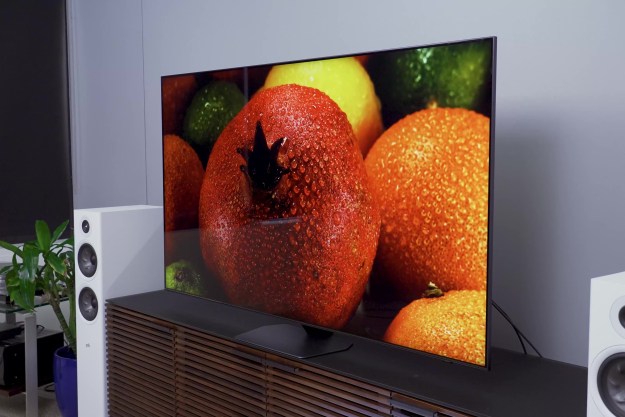When it comes to TV technology, Hisense is all-in on mini-LED backlit QLED TVs. The company, which is known for its affordable yet dazzlingly bright TVs, has just revealed its brightest creation yet at CES 2023: the UX, an 85-inch 4K mini-LED QLED TV that is powered by Hisense’s new ULED X platform and features more than 20,000 mini-LEDs, which give the UX a claimed peak brightness of 2,500 nits. The company’s previous brightest TV, the U8H, had a claimed 1,500 nits but measured closer to 2,000.
That’s going to be a very bright display, but Hisense says it can also exert a lot of control over that brightness thanks to more than 5,000 local dimming zones. “Our engineers were tasked with making the best LED TV available, and they delivered with ULED X,” said David Gold, President of Hisense USA, in an emailed press release.
The company says that the UX has the industry’s first-ever 16-bit light control algorithm, which provides even more precision and granularity for smoother dimming and color effects. Hisense feels that its ULED X technology compares more than favorably with OLED, with the claims that it can achieve three times the “environmental contrast” of OLED TV, and two times the dynamic range. Hisense hasn’t said which OLED TV it used for these benchmarks.

Picture processing comes from Hisense’s Hi-View Engine X chipset and a new AI picture quality algorithm, but the company has said little about the rest of the UX’s capabilities, like support for HDMI 2.1 features, or which operating system will run the UX’s smart TV features. It has said that it will support Dolby Vision, Wi-Fi 6e, NextGen TV, and AMD’s Freesync Premium Pro.
On the audio front, the UX is equipped with CineStage X, a newly developed audio system with more than 80 watts of power, seven speakers, and a 4.1.2 multi-channel audio system with Dolby Atmos.
There’s no word yet on when Hisense will release the UX or how much it will cost, but we’ll keep you posted as soon as we find out.
Editors' Recommendations
- Sony debuts the Bravia 9, its brightest 4K TV ever, alongside new 2024 models
- TCL’s bonkers China-only microLED TV is as tall as Darth Vader
- Hisense shows off massively bright 98- and 100-inch TVs
- Hisense teases 110-inch, 10,000-nit TV ahead of CES 2024
- Sony Bravia X95L mini-LED vs. TCL QM8 QLED: The best LCD TV and the one you should buy




